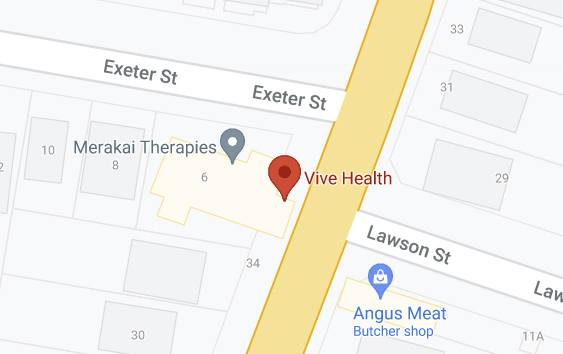Mindy Duncan (Clinical Naturopath)
Period pain, or Dysmenorrhoea, is one of the most common menstrual-related concerns experienced by women. As a result of the prevalence of this symptom, it in many ways is disregarded & not treated until the pain reaches a certain level of intensity, causing the type of pain which disables you from going about your normal daily life. Any pain you experience should always be investigated & this is true of dysmenorrhoea also. In today’s blog post we will explore what constitutes dysmenorrhoea, the types of dysmenorrhoea & how you can start the journey of resolution & enjoy a life of painless periods.
 What is Dysmenorrhoea?
What is Dysmenorrhoea?
Dysmenorrhoea (dys = difficult, menorrhoea = menstruation).
A small amount of discomfort the day before & at the beginning of menstruation is considered normal but pain that requires medications, strong pain relief, inhibits you from going about your day (or doing anything), causes nausea & vomiting or creates referred pain to other areas of the body (i.e. down the side of the legs or back) is unfortunately not normal. With period pain, as with all other symptoms, it’s important to uncover its origin, the source of the pain.
Dysmenorrhoea can be divided into two types:
-
Primary dysmenorrhoea (PD)
PD is period pain that presents where there is no evidence of any major underlying pathologies. PD typically begins in adolescence & first few years of menstruating as the ovulatory cycle becomes regular. PD may otherwise be referred to as ‘functional dysmenorrhoea’, meaning that there is no visible evidence of abnormalities present in investigations such as blood testing, ultrasound or surgical investigations including laproscopy. Everything “appears” to function normally however the optimal function of the body is still impaired. Irritable bowel syndrome (IBS) is another great example of a functional disorder.
The preposed mechanism behind PD is an increased presence of / imbalance of inflammatory mediators (such as prostaglandins) that are produced before & during menstruation. This increase in prostaglandins occurs as the uterine lining begins to break down in preparation for menstruation. Whilst these prostaglandins play an essential role in the initiation of menstruation, too many prostaglandins can result in pain.
-
Secondary dysmenorrhoea (SD)
SD is pain that typically occurs as a result of an underlying health condition. Some great examples of underlying conditions which result in an increased period pain would be in the case of endometriosis, adenomyosis, pelvic inflammatory disease (PID) or fibroids. It’s pain that typically develops post-adolescence (not always, as endometriosis can present very early in a women menstruating life). In many women this pain can be debilitating, disabling them from going about their normal daily life. The most effective method for treating SD is to treat the underlying cause. That’s why it’s vitally important to have it investigated by your trusted medical practitioners for accurate diagnosis.
Treatment Options for Period Pain
Some evidence-based treatment strategies for period pain include:
Elimination of A1 casein found in cows dairy:
In some women intake of A1 casein from cows dairy can be distaser for periods. Why? In some women the intake of A1 casein increases the production of inflammatory cytokines & histamine, aggravating the inflammatory response leading to increased pain & inflammation. For these women strict elimination of A1 casein from cows dairy can dramatically reduce or eliminate period pain entirely.
Limit intake of alcohol
Alcohol intake can have a fairly negative impact on period pain. Regular alcohol intake has been shown to increase oestrogen levels in numerous studies in pre-menopausal women by impairing the livers clearance of oestrogens. The increase in circulating oestrogen may reduce likeliness of ovulation by impairing follicle-stimulating hormone (FSH) production, a hormone which stimulates the growth & maturation of the ovarian follicles in preparation for ovulation. Without ovulation, progesterone production is lost & we miss out on progesterone’s natural anti-inflammatory effect. Without sufficient progesterone production periods may also become much heavier.
This doesn’t mean you can’t enjoy a glass (or 2) of vino on the weekend. Aim to stick to a maximum of 2 standard drinks per day & keep Monday-Friday alcohol free.
Omega 3
Clinical trials comparing the effectiveness of omega 3 vs over-the-counter anti-inflammatory medications such as Ibuprofen found omega 3 to be superior in relieving moderate to severe period pain in PD. Omega 3 was also found to significantly reduce pain scores in just 3 months of consistent usage.
Zinc
Zinc may help to relieve menstrual pain in a number of ways. Zinc supplementation was found to have a beneficial effect on period pain by modulating the production of prostaglandins (remember those inflammatory molecules responsible for pain) in women with mild-moderate PD. Zinc is also an essential mineral for ovarian function & maturation of ovarian follicles which promotes regular ovulation & thereby the production of progesterone.
Magnesium
Magnesium is an essential mineral for women’s hormonal health & especially useful in the case of period pain & cramps. Magnesium works in a number of ways to relieve period pain, it helps to prevent the development of prostaglandins, promotes muscle relaxation & supports oestrogen detoxification. The ideal form of magnesium to use for menstrual cramps would be magnesium glycinate or magnesium citrate.
For more specific information with regards to dosage please consult your trusted healthcare professional for safety & efficacy.

Some helpful questions to ask yourself about your period pain & to discuss with your health care provider:
- How long has this pain been occurring for? Have I always had this or has this developed over time?
- Can you describe the type of pain? Some examples here could be: sharp, dull, throbbing, dragging, heavy.
- Is the pain accompanied by other symptoms? Some examples here could be: nausea, vomiting, headaches, faintness, fever, changes in bowel function (i.e. constipation, diarrhoea, IBS), changes in bladder function
- Is the pain localised to the lower abdomen or does it radiate or refer to other areas of the body (i.e. down the legs, lower back, bowels)
- Is the pain generally relieved by over-the-counter pain medications such as Nurofen or Naprosyn? If so how many do you use during your period & how often?
- Is the pain present before, during or at the end of menstruation?
- Has the pain presented after missing or having a late period?
References available upon request
Mindy Duncan is a Bachelor qualified clinical naturopath with special interests in women’s health, menstrual & hormonal health, thyroid function & self-esteem. Mindy is available for consultations via the Vive Clinic on Tuesday & Wednesdays.
Nourish Naturopathy
To book a consultation with Mindy click here



